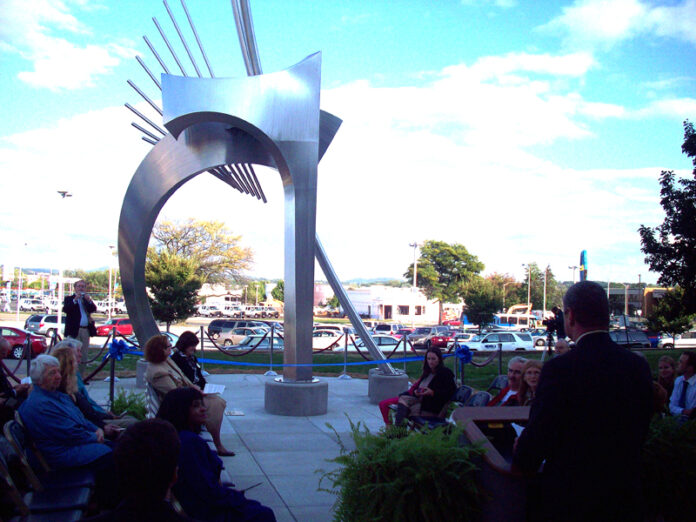
by Gene Marrano
It’s no accident that Susan Jennings, the arts and cultural coordinator for Roanoke City, is based in the economic development department. The city has hitched its wagon in part to promoting the arts as an economic engine, with financial support for the Taubman Museum’s construction and for other cultural institutions in the city.
About a year ago Jennings and company put together a draft of an arts and cultural plan, which was then made public. “When businesses look at regions, once they get past all of the infrastructure [needs], the quality of life amenities [like] arts and culture… play into it,” said Jennings, “and the city sees that importance.”
Community meetings were held with artists and other stakeholders, asking them what they wanted to see in such a document. Tweaks were made as a result and in August 2011, City Council adopted the document as part of Roanoke’s Comprehensive Plan. The Roanoke Arts Commission then assembled an implementation committee to put it into motion. “All of the actions and ideas in the plan came from the community, basically,” said Jennings. The Arts Commission, a volunteer board that includes some local artists, supplied input as well.
“Through the adoption of the city’s first comprehensive arts and cultural plan, we are stressing what we already know – that arts and culture play a vibrant and important role in economic development, tourism and quality of life,” said City Manager Chris Morrill.
In many instances it calls for more collaboration, easier and more focused access to information on what is available culturally, and more outreach of the arts into neighborhoods. An NEA grant program Jennings is working on could provide seed money for individual artists that want to work on projects that support their local community.
If that grant comes through artists would not have to be part of some institution to apply for economic assistance – they would just need a great idea that would enhance the neighborhood. “There’s really not a mechanism for that right now,” said Jennings. The existing neighborhood grant program in Roanoke City has also added a category for artists and an advisory committee will review applications.
There was a call for closer tie-ins to art programs’ events at higher institutions of learning, like Hollins University and Roanoke College. “Sometimes that programming is kind of isolated from what we’re doing downtown. We’ve heard that a lot,” noted Jennings, who formerly headed up the Arts Council of the Blue Ridge and was Roanoke’s public art coordinator.
The AIR (Art in Roanoke) program will be installed this spring once many pieces, now on public display, are sent back to the artists. The program relies on a percentage of the city’s capital budget to bring in new art, and Roanoke doesn’t have the excess money right now. “We’ll have some empty pads sitting there for a while,” said Jennings.
The Raleigh Court Neighborhood Association has come together via a grant to purchase a piece of public art that was created and displayed there by Ann Glover, who will remake it in fiberglass.
The Hurt Park neighborhood has applied for a grant to build an artistic bus shelter, perhaps along the lines of the ones near William Fleming and Patrick Henry High School.
“I think AIR has really made people see that neat things can happen out in the neighborhoods, not just downtown,” said Jennings.
“While in tough economic times the city cannot increase financial support, we can direct staff time to assist with marketing, grant research, coordination of activities and look at other incentives we can offer artists and arts and cultural organizations,” noted Morrill.
On Wednesday Feb 22nd, Morrill, Jennings and other city officials will present an update on where the arts and cultural plan stands – what has been adopted and what lies ahead. A finalized plan and a progress brochure will also be presented at the meeting to be held at the Claude Moore Education Complex at 5PM.
Jennings said an update should be presented quarterly and she is always looking for fresh input, calling it a living document. “We want to highlight our community partners that are working with us on a lot of these efforts,” said Jennings of the upcoming public meeting, “it is a chance to celebrate what they’re doing.”
The arts and cultural plan is also available on Roanoke City’s government website: www.roanokeva.gov.

